#kimono women
Explore tagged Tumblr posts
Text
#cotton kimono#kimono#tunic#kimono robe#cotton kimono robe#japanese kimono#kimono jacket#cotton robe#gift for her#kimono cardigan#kimono dress#kimono women#unisex kimono#boho kimono#lightweight kimono#kimono robe women#cotton bathrobe#bridesmaid robes#robe for women#block print#kimonobathrobe
0 notes
Text
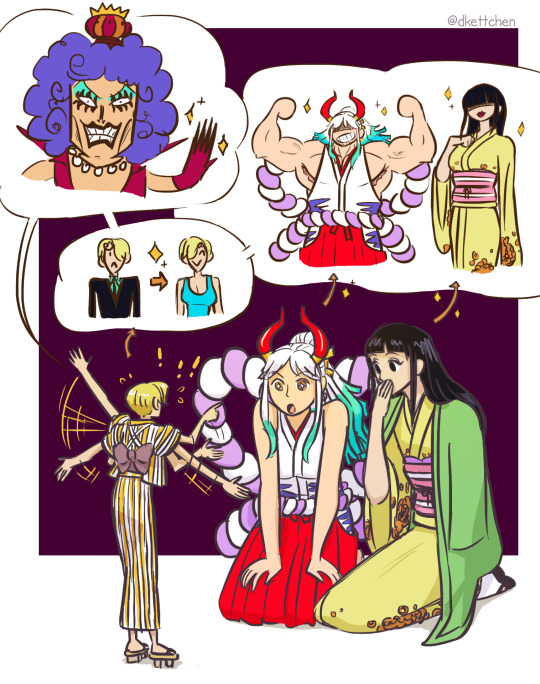
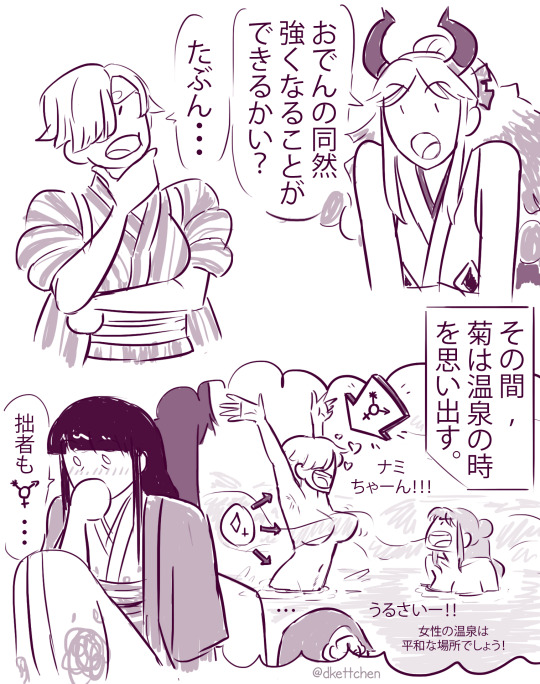
she would've told them unlike her canon! version who decided not to be an ally smh
#one piece#trans!sanji#sanji#kiku#yamato#ワンピース#I'm practicing my japanese shhhhhh#(日本語のペラペラ人:俺は文法とか書く方とか間違ったら教えてください😅ありがとうございます)#translation:#Yamato: I'll be able to get as strong as Oden?#Sanji: Probably... 🤔#[meanwhile Kiku is remembering the time in the hot spring]#(Sanji: Nami-chan!!!)#(Nami: Shut up!! The women's bath is supposed to be a peaceful place!)#Kiku: I am also ⚧️ ... o.o#(y'all english speakers had me all to yourselves for a decade it's about time I start to also sometimes make stuff in my next language lol#notably for media *from* that language#same as it made sense to make fan content in english for [american superhero franchise we don't talk abt anymore] back in the day#(happy seasonal reminder that Ren Is Not A Native English Speaker and This Is My 5th Language hi 😅))#while looking up reference for this I learnt that the straps to tie back the kimono sleeves are called tasuki#also I decided yamato get big muscles cause he got them kaido genes in im (I also gave him his dad's young-man-facial hair)#the more I do transition projections for one piece characters while tryna adhere to the style the more I learn that sometimes stylisation#uses bones less as literal determinants for where things go and just kinda exaggerates shapes based on vibes alone instead#meaning trans characters' bones wouldn't literally stay looking the same in that stylisation in the way they do irl#they'd get exaggerated differently based on what the surrounding stuff is doing#I still think oda's transition demonstration when we first met iva was unreasonable even with that in mind tho
2K notes
·
View notes
Text

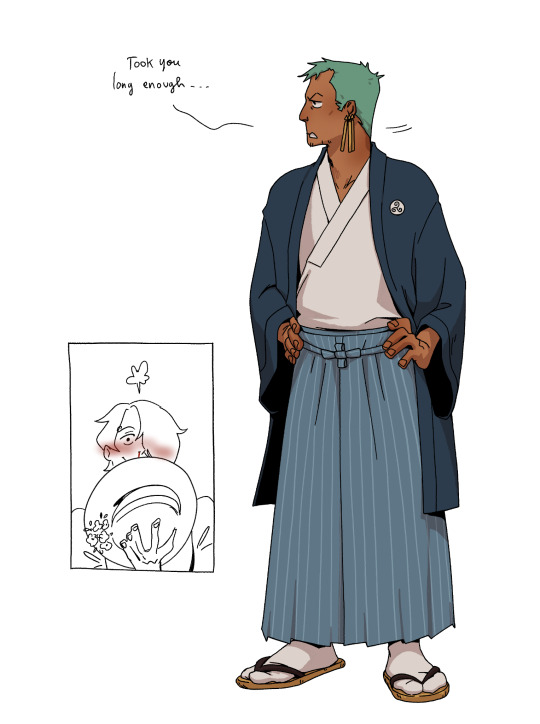
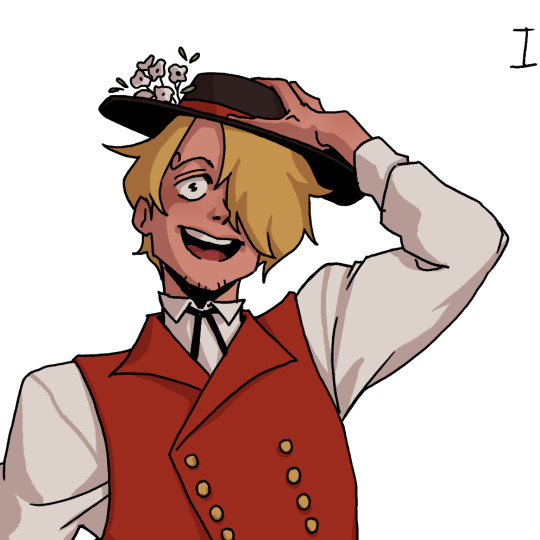

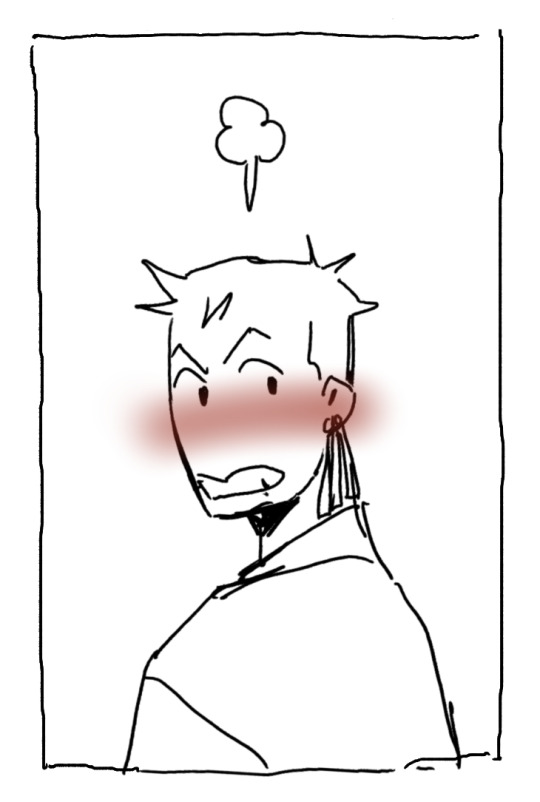

they have a traditionnal wear party with the crew
thanks to @a-random-fandom-friend who gave me the push to finally draw sanji in traditionnal elsassisch wear
also
zoro is breton, but born from a japanese mother (as in canon his mother is from wano and dad from a random village in east blue, well now hes from a random village in bretagne dw about it)
and
i have to admit
i had to fight the urge to put sanji in a dirndle
#womens trad dress are SO PRETTY AND I WANT TO PUT HIM IN A CORSET OKAY#op#one piece#french au#lyon au#traditional wear#elsassisch costume#kimono
1K notes
·
View notes
Text
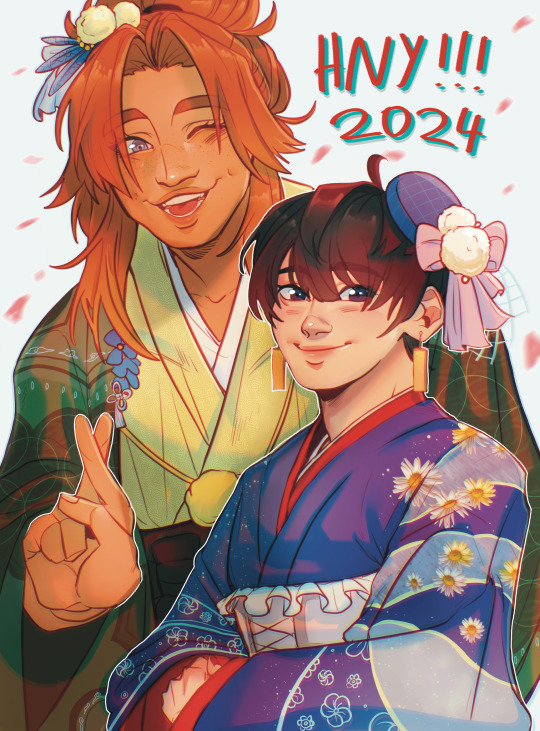
she was running a little late for the photo but she’s here now!!
#charlie’s art#trigun stampede#meryl stryfe#milly thompson#millymeryl#merylmilly#insurance girls will always be my woooorld#merilly. m&m. all#i was so disappointed at the lack of enthusiasm for ‘let’s add milly to the kimono art’#have you forgotten your ROOTS#your ANCESTORS#that blonde frat fuck matters NOT in the grand scheme of things#i have to do everything myself around here. for the girls. and the lesbians#i do things for lesbians and for women
610 notes
·
View notes
Note
Hello ! I've been really into Gegege no Kitarou recently, and looking at his mom made me wonder : back when kimonos were worn on a daily basis, how did pregnant people style them ? Did they wear other types of clothes that don't compress the stomach as much instead ? If you happen to have any info on this, it would be very cool :)
Hi! It's hard to imagine as many kitsuke pictures now promote perfect tubular silhouettes with not a fold out of place, but in the past kimono were worn far more loosely than they are today!
Kimono was then worn everyday (=no time for perfect polished photoshoot looks ;), many kistuke accessories we now use didn't even exist (=they were not needed!).
During Edo period to late Meiji, feminine silhouettes were far more flowy/willowy than what we have today:




Kimono tended to be longer (hikizuri for ex.) and adjusted far less tighlty on the upper body (=people were working!). Depending on the period obi were narrower, or worn differently (criss crossed for ex.) or laxer than what we do today.
Pregnant women had no trouble adjusting their clothes to their changing bodies :)
The kimono was worn looser and looser as belly and boobs grew. If possible, kimono could have been unstitched and retailored (if fabric allowed it) to the bigger size needed.
Obi and ties were set above (and/or under the belly depending on time), like so:



And pregnancy belts were widely used.
One belt was a type of sarashi (soft cotton roll, which was also used for chest) named hara-obi 腹帯, which provided support:
youtube
Another special belt was the Iwata-obi 岩田帯, used during Obi-iwai 帯祝い, a ceremony taking place on the day of the dog during the fifth month of pregnancy. This was meant to ensure safe birth, as dogs were thought to give birth easily - hence why inu hariko are good luck charm for expecting women:

The obiiwai was also a way to announce a pregnancy to the community (as miscarriages, abortions, and infanticides were sadly quite common then).
Iwata obi are still a thing, here are modern ones:


Finally, as a side note, what pregnant women could do if they felt smothered by their kimono? Well, just open the damn thing to wear it much like a robe!
Japan had not the same shaming view of female breasts than the West then. It was quite common to see some working class people in underwear/loosely dressed, or have both sex share spaces in the nude (baths for ex.).
Tbh, unless she was living a sheltered life (no work, servants, etc.), I don't see why a pregnant woman would have bothered with a properly adjusted kimono, when she could have just be much freer and comfortable xD
Hope this helps!
#ask#japan#pregancy#women history#kimono#fashion history#sarashi#hara obi#Iwata obi#obi iwai#inu hariko#pregnancy belt#kimono undergarment#pregnant woman#着物#帯
351 notes
·
View notes
Text

leonardo_vision.png
aka
uwusagi
#women's kimono look amazing on everyone send post#i almost cried drawing this i'm slowly getting my soul back#tervdraws#usagi yuichi#yuichi usagi#peepaw yuichi#usagi chronicles#samurai rabbit#leoichi#because implied höhö#edited caption because i almost missed my chance
178 notes
·
View notes
Text

112 notes
·
View notes
Link
#cawk#leggings#trans boy#Women’s rights#Kimono#yamato#sexypose#georges d espagnat#artistmexican#AI Idol#top less
106 notes
·
View notes
Text
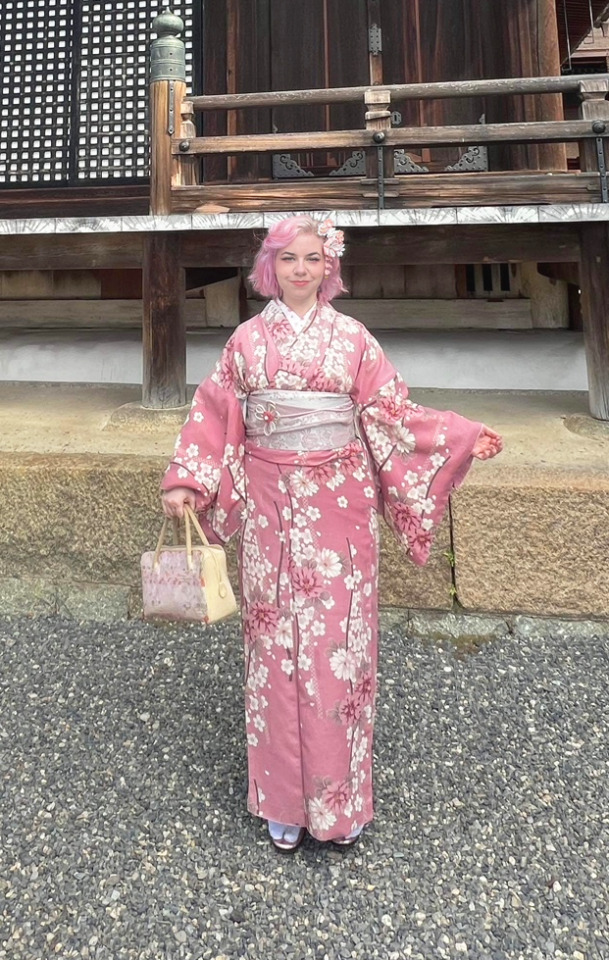
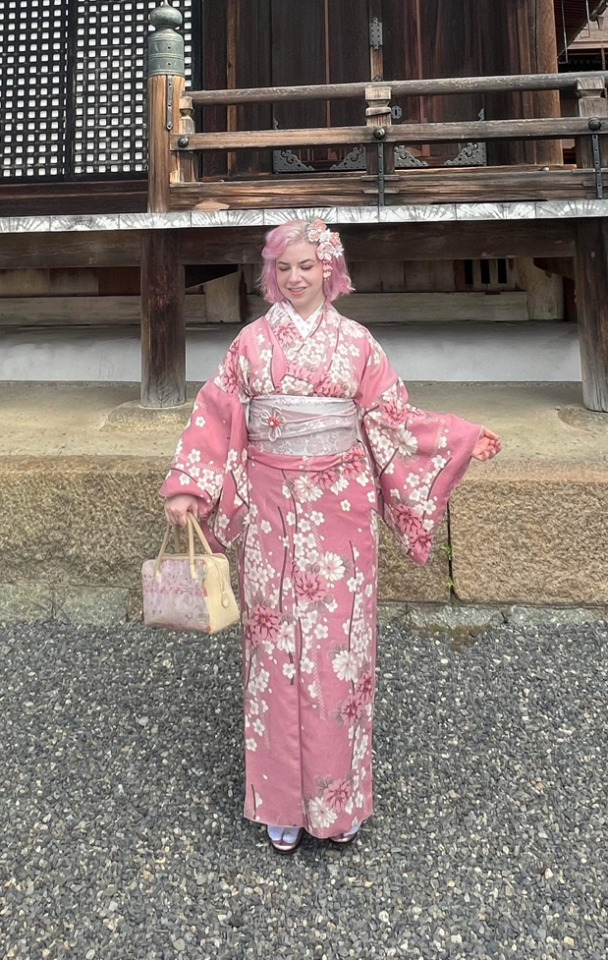
I have returned from my trip to Japan! It was incredible!
#personal#pers#pictures#also shoutout to the family of 4 malaysian women who adopted me in the dressing room#The mother called me her “American Daughter” and asked me to be in their photos when we were all dressed in kimono 🥹
404 notes
·
View notes
Text

Drawing Kiruko again put me in the mood to rethink a bunch of aspects of her design, and I'm super happy with how she turned out. Gonna leave the original up for comparison's sake
Twitter
#Kiruko#popplebot#monster girl#bug girl#insect girl#tall women#kimono#green skin#short hair#red eyes
1K notes
·
View notes
Text
#cotton kimono#kimono#tunic#kimono robe#cotton kimono robe#japanese kimono#kimono jacket#cotton robe#gift for her#kimono cardigan#kimono dress#kimono women#unisex kimono#lightweight kimono#cotton bathrobe#bridesmaid robes#robe for women#block print#bath robe
0 notes
Text

yurena’s new year’s attire!!!!
#sorry I’m so late to this#I didn’t have any good ideas for it until now lmao#twisted wonderland#twst oc#twisted wonderland oc#twst#yurena lovelace#disney twisted wonderland#new year’s attire#I’m not all that happy w yurena’s hairstyle#it’s weird to see her w/o a bow I think#that’s probably it ngl#her kimono is a furisode which is for unmarried women esp on new year’s
25 notes
·
View notes
Text

Paul Poiret (French, ) was one of the most influential fashion designers of the first half of the 20th century. He is credited with freeing women from the corset with his draped, unstructed styles that revolutionized the fashion world. Instead of tailoring, Poiret designed his fashions by draping and folding, creating unique pieces that echoed the traditional styles of the East. Art Deco fashion also became synonymous with Paul Poiret.
“Whenever I sign a garment with my name, I consider myself the creator of the masterpiece.” – Paul Poiret

Sorbet, created in 1912, is one of Poiret's signature designs. It was referred to as the "lampshade dress".



Poiret's first successful design was a kimono coat which he created while working for the design house of Jacques Doucet.


Left: Madame Poiret, Paul's wife, in 1912, wearing one his more bohemian creations
Right: Model wearing a Paul Poiret dress, 1914
Poiret's original designs and his ability to market his styles in new ways changed the fashion landscape forever. He designed outfits for film actresses, creating opportunities for his styles to be seen and credited beyond the runway. He was quite the bon vivant – a masterful host of events and parties that showcased his latest styles.

Fancy dress costume • 1911 • Metropolitan Museum of Art
The costume pictured above was influenced by the Russian dance company, Ballets Russes, when it performed in Paris. Poiret designed the costume for his 1002nd Night party in 1911, where it created tremendous publicity for his fashion house.
#fashion history#paul poiret#french fashion design#belle époque fashion#art deco fashion#lampshade dress#the resplendent outfit blog#women's fashion history#early 1900s fashion#designer fashion#vintage designer fashion#kimono fashion#historic clothing#old fashion photos
38 notes
·
View notes
Text

Art by Saito Kiyoshi
32 notes
·
View notes
Text

Women’s Kimono. Japan, c. 1950-1970, silk.
The white lines are hand-painted onto the black silk fabric. The goose was embroidered using alternating short and long stitches. When this kimono is worn, the bird is seen solely on the front, while the back shows the dramatic movement of the lines. .
30 notes
·
View notes
